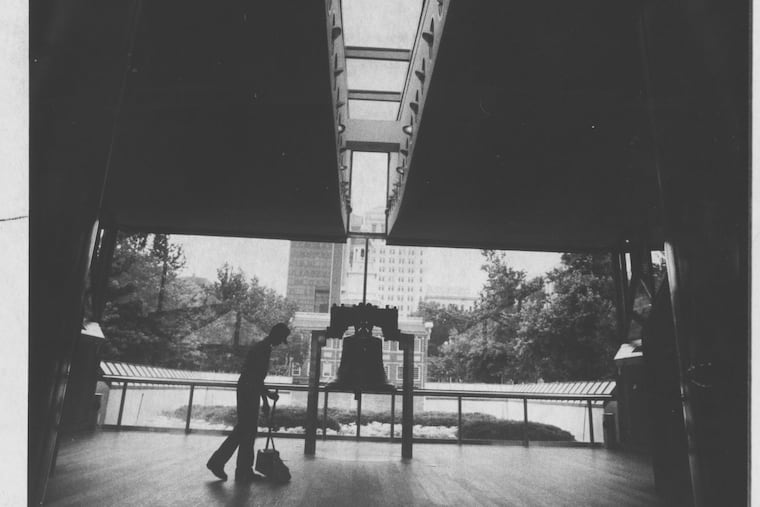This week in Philly history: Bicentennial kicks off with the Liberty Bell moving to a new home across from Independence Hall
On Jan. 1, 1976, the National Parks Service kicked off the bicentennial celebration by moving the Liberty Bell into its own pavilion.

Before we get to why it moved, let’s start with why it’s important.
A large number of Philadelphians, if they’re being honest, don’t know why they should care about the Liberty Bell.
They mostly know that it’s broken.
“I took it for granted,” 56-year-old Michael Finn told an Inquirer reporter on New Year’s Day, 1976, “like everyone else.”
It was intended to sit inside the steeple of Independence Hall as the Continental Congress drafted, debated, and signed the Declaration of Independence and the Constitution. And it’s not a documented fact, but it’s plausible that the bell rang out on July 8, 1776, summoning colonists to gather ‘round to hear the first public reading of the Declaration.
That’s partly why it’s important.
It was cast in London, and shortly after arriving by boat in Philadelphia, it cracked. Two local craftsmen, John Pass and John Stow, melted and molded the English ringer’s parts in 1753 to cast a new, 2,080-pound bell.
So why is a busted bell important? Why should we care?
It’s the inscription.
Proclaim Liberty throughout all the Land
Unto all the inhabitants thereof
That Bible verse, Leviticus 25:10, gave it power.
Abolitionists adopted the bell as their symbol in their fight to end slavery. They dubbed it the Liberty Bell in the 1830s.
And at some point in the 1840s, a thin crack formed, but it was fixed. And then it rang out for George Washington’s birthday in 1846, which birthed the final and fatal and signature jagged crack that put it out of commission. It hasn’t been rung since — nearly 180 years.
And its silence helped give it even more power. The country, abolitionists said, wasn’t living up to its inscription.
It couldn’t let freedom ring.
After the Civil War, the bell traveled the country, stopping at expositions and fairs as a ham-fisted rallying cry for divided states to once again find a common interest. The symbol would be adopted by suffragettes in the 1920s, and by civil rights leaders in the 1960s, but it still sat in a cramped room in Independence Hall.
Until Jan. 1, 1976. To kick off the bicentennial celebration that commemorated the 200th anniversary of the Declaration of Independence, the National Park Service moved the bell into its own easily accessible, glass and steel pavilion at the center of Independence Mall.
A bell that doesn’t ring was now a symbol that was hard to miss.
Even on that rainy and windy and frigid first day of 1976, thousands came to see it, and touch it.
The architecture of the pavilion was always a sore spot, and in 2003 the bell was moved to its current home. The new building’s redbrick facade was thought to be better connective tissue with the colonial architecture, and helps reunite the bell with its context.